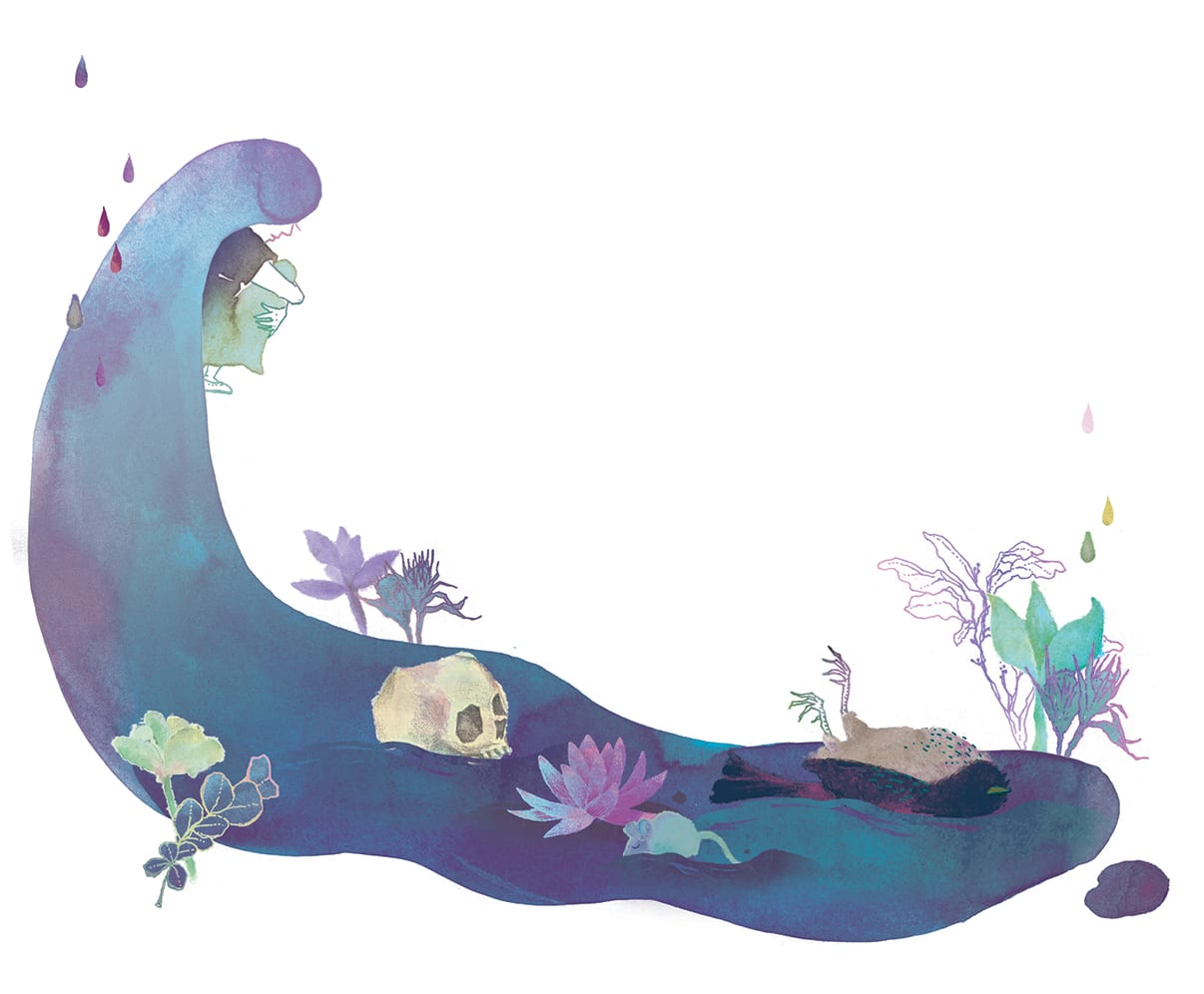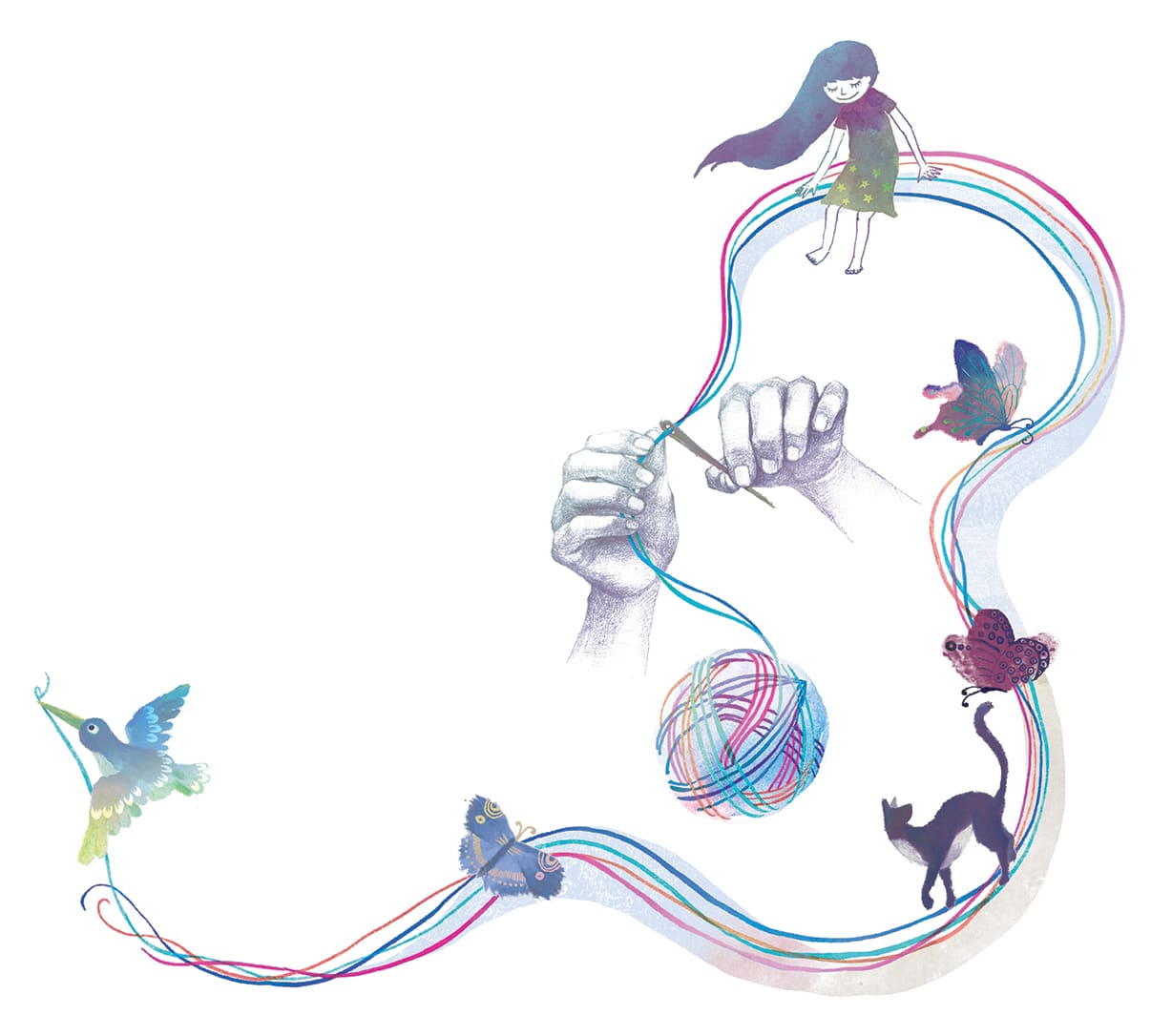There is no question that mindfulness, compassion, and wisdom are more important than ever before—even though the essence of mindfulness is and has always been timeless, having to do with our relationship to this moment and to any moment as it is, however it is. The past is only available to us in this present moment. And so is what is yet to unfold in a future we try endlessly to envision and control. If you want the future to be different, the only leverage you have is to inhabit the present moment fully, and that means mindfully and heartfully. Here is a 20-minute meditation to practice tapping into your capacity to be in touch with your experience, and to be awake and aware with no agenda other than to be awake and aware.
The Breathscape Practice for Cultivating Mindfulness
- Choose your posture. As we enter this period of formal practice together, having carved out this time to be with and by yourself, establishing yourself as best you can in a posture that embodies dignity. Whether you’re sitting on a chair, or on the floor, or lying down, or for that matter standing if you need to be standing. Allowing your eyes to be either open, with the gaze stable and unfocused in front of you, or gently closed.
- Recognize that my words are merely guides to things you inherently know. And establishing as well that gentle but firm intention to be as awake as possible, to be as in touch as possible with the present moment just as it is, and however it is for you, using my words merely as pointers to your own interiority, your own inner experience from moment to moment, so that what is important is your experience. And you can tune out or drop underneath what I’m saying on this, or any of the other CDs, to feature at any and all times your own experience both as I am speaking and in the stretches of silence.
- Explore your motivation and your breath. So at this point bringing to mind—or we might say into your heart—what the deep motivation or yearning is for taking this time for yourself in the first place. And as you do, gradually allowing your attention to alight gently on the breath, moving in and out of the body. Featuring as a primary focus some region in your body where the breath sensations are most vivid for you right now. That might be in the belly, where you may be experiencing the gentle ballooning out of the abdomen on the in-breath, and the gentle receding of it on the outbreak. Or at the nostrils, where you are actually feeling the passage of the air as it comes in and out. Or a larger sense of the entirety of each breath moving from the nostrils down into the belly if you will, or any place else in the body that the breath is most vivid for you.
- Allow your breath to be as it is. And without forcing or striving or efforting, as best you can, just gently riding on the waves of your own breathing, moment by moment, as a leaf might ride on the waves on the surface of a pond. Feeling the sensations in the body associated with the breath coming in and the sensations in the body, wherever your focus may be, on the breath leaving the body. Without pulling the breath in or pushing the breath out, without any forcing whatsoever. Just allowing the breath to be as it is, moment by moment by moment, and breath by breath by breath
- Allow your attention to be as it is. Allowing your intention to include the full embracing of each and every breath gently, lightly with mindfulness, so that the breath is known, felt, experienced, in the moment of its arising. The full unfolding of the in-breath, and the falling away in the out-breath and the next arising, all that embraced, held in awareness as best you can, moment by moment by moment.
- Rest in awareness. Just this very moment with the breath moving and the feeling, sensing, knowing of the breath as it is, moment by moment, breath by breath, sitting here, resting in awareness itself. Featuring in this moment this breath.
- Observe your wandering mind. Sooner or later, it’s inevitable that we will discover that the mind has a life of its own. A very active, busy, inquisitive, sometimes obsessive life. And so even with the strongest of intentions to keep our attention on the breath and sustain it breath by breath, it’s hard not to notice after a while, that that intention may get sidetracked, hijacked, diverted, and we become absorbed in some other activity of mind. The various endless scenarios and stories that play themselves out in the mind: maybe it’s anticipating and worrying about future events, or planning or fantasizing about some future. Or maybe it’s recollecting past events and getting carried away by memories and feelings about the past. Or maybe it’s arguing with ourselves about this or that, or with somebody else for that matter, and objecting to this or that. It could be virtually anything, and in the process the breath that we were paying attention to, this very breath can rapidly disappear from our awareness even though of course it’s still moving in and out of the body.
- Note when your mind has wandered. And even though we had made the commitment to just be with an awareness of breathing. But in any moment that you discover that the mind is no longer with the breath, or on the breath, not turning that into a problem, or in any way condemning yourself for this lapse in attention. Simply, and open-heartedly and affectionately noting what’s on your mind in this moment. If the breath is no longer center stage in the field of awareness, what is? In the noting, seeing, feeling, sensing what’s on your mind.
Simply, and open-heartedly and affectionately noting what’s on your mind in this moment. If the breath is no longer center stage in the field of awareness, what is?
- Allow yourself to be aware of the breath again. And then allowing the breath to be part of it right in this moment, because it’s also here right now, and just allowing wherever the mind is moved to be, however it is, and reestablishing the primacy of the attention once again at the belly, at the nostrils, on the fluxing of the breath sensations in the body, in this very moment of now. So when you are recognizing that the mind has drifted or wandered, that recognizing function is already back. That is awareness, awareness itself. We simply pick up on how the breath is in this moment.
- Ride the waves of the breath. So aiming, if you will, the attention on the breath, and then as best you can sustaining the attention on the breath by riding on the waves of the breath sensations, and when you become aware that the mind has drifted and is no longer on the breath over and over and over again, gently, kindly compassionately just noting what the mind is up to now. Allowing it to be exactly as it is, and just in that reconnecting with the breath, which is also an already here, featuring it once again centre stage in the field of awareness and practicing in this way with the quality of open and affectionate attending to the unfolding of your life as it unfolds right here, breath by breath and moment by moment.
- Embrace this act of loving-kindness. And perhaps sensing that this very act of attention, this very act of being present in this way, this very act of persisting, in aiming and sustaining, of establishing yourself in a posture that embodies dignity and presence, is a deliberate, intentional act, nothing less than a radical act of loving-kindness toward yourself. That is a radical act of love, just to meet the breath, to embrace the breath and the fluctuations of your own mind in this way.
- Be awake with no agenda other than to be awake. So sitting or lying or standing as if your life depended on it. Breathing and knowing the breath moving as if your life depended on it, which of course it does, moment by moment by moment by moment by moment, resting here fully awake with no agenda other than to be awake, to be knowing of this breathing. You’re not shutting out the soundscape or anything else in the field of awareness, but simply featuring the breath center stage and allowing everything else to be in the wings.
- Allow each in-breath to be utterly fresh, a new beginning. Allowing each out-breath to be a complete letting go. Each moment met each breath, met in its original form, us letting go of the past, even the last breath. Letting go of the future, even the next breath, and simply being utterly present with this breath, this moment, this sitting here, this being human, this being awake to your life, expressing itself as breathing. As sitting. Or lying here, or standing. As knowing the breath. And the knowing of the breath, moment by moment by moment.
- Embrace each breath in this moment. And in the few remaining moments of this sitting, if your posture is collapsed or if your attention has in some way collapsed, seeing if you can re-establish the lightest of touches. And you’re sitting or lying here in your embracing of the breath, in your resting, in awareness of breathing outside of time altogether. Just this moment, just this breath, just drinking in the air. This flowing of the air through the body, this giving and receiving of the air, this unfolding of life, moment, moment by moment, in awareness.
The above is adapted from Jon Kabat-Zinn’s Guided Mindfulness Meditation Series 3, available here. These guided meditations are designed to accompany Jon Kabat-Zinn’s book Meditation is Not What You Think and the other
three volumes based on Coming to Our Senses.
The post The Breathscape Practice for Cultivating Mindfulness appeared first on Mindful.
from RSSMix.com Mix ID 8196908 https://www.mindful.org/the-breathscape-practice-for-cultivating-mindfulness/


